Over 319 billion emails are sent and received each day — and that number is expected to reach 376 billion by 2025. That’s a lot of information to sift through.
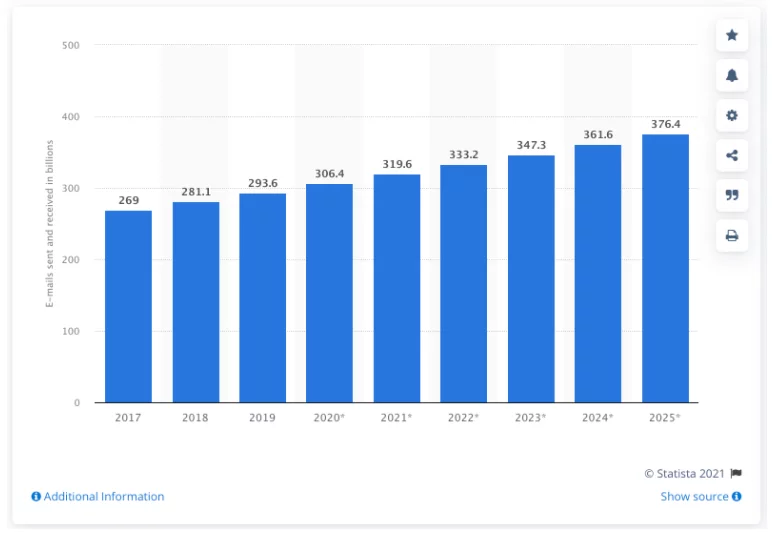
So, how can publishers and advertisers possibly stand out from the crowd?
Three words: email personalization strategies.

Businesses must use a range of email marketing platforms, customer data sets, tools, and techniques to reach the right audiences with the most relevant messages — directly in their inbox. Otherwise, they risk getting relegated to the Trash or Spam folder, Or, perhaps even worse, just being plain ignored.
As Jeeng found in our 2022 Digital Publishing Survey Report, U.S. adults are consuming more email than ever. And they want those emails to be relevant to their interests. A full two-thirds say they’d be more likely to subscribe to publishers’ emails if they knew the content would be personalized — an increase from 61% last year. And, among those who pay for a subscription to a digital publication or email, 42% do so because they want access to personalized content. This sentiment is especially strong among millennials, who are more likely than other generations to pay for customized emails.
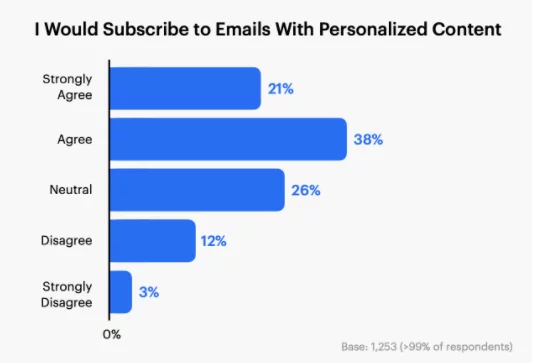
To help publishers and advertisers win over these personalization-hungry audiences, we’ll break down just what personalized email marketing entails, along with the top 3 personalized email marketing best practices.
Let’s get started.
What is a personalized email?
First, you might be wondering, what is a personalized email exactly? A personalized email is an email that is customized to the interests, preferences, and behaviors of a specific user or target audience segment.
Emails can be personalized in a wide variety of ways, such as with:
- Subject lines that speak to the reader’s unique needs and interests
- Ex: “We thought you might like this behind-the-scenes content”
- Dynamic content offers that are automatically delivered to certain demographics based on their customer data
- Ex: Special offers for relevant memberships packages and roundups of trending articles in their favorite verticals
- Ads that are programmatically tailored to each email’s content and each subscriber’s preferences
- Ex: Ads for athletic gear in an email newsletter about sports stories
- Distribution strategies that reach readers on the right devices at just the right times
- Ex: Emails sent to desktop users when they’re logging on for their workday
You can make emails personalized by using behavioral segmentation. This involves creating separate groups of targeted consumers based on their behavior patterns with your website, emails, and app.
For example, you might use behavioral segmentation to group subscribers according to:
- Where and how they research purchase options before ultimately buying
- When they’re most likely to engage with your brand
- Which benefits they want to receive from your services, such as access to exclusive or educational content
- Which loyalty tier they fall under and how active they are on your digital properties
Ultimately, personalized emails are valuable tools that publishers and advertisers can use to deliver enhanced experiences for their subscribers and improve engagement.
What are personalized email marketing best practices?
Now, let’s look at actionable strategies that publishers and advertisers can use to make the most of their personalized email marketing efforts.
1. Create audience segments with first-party data
Tap into the power of those subscriptions and use the email address — one of the most valuable pieces of first-party data — to create a target user profile and understand what your customers want. From there, you can create unique audience segments based on different interests and behaviors, and reach each segment with targeted personalization strategies.
Rolling Stone, for example, delivers a range of newsletters for people interested in different content areas, such as breaking news, country music, and politics. Each offering represents a unique audience segment of people who’ve opted into one-on-one content that meets their preferences.
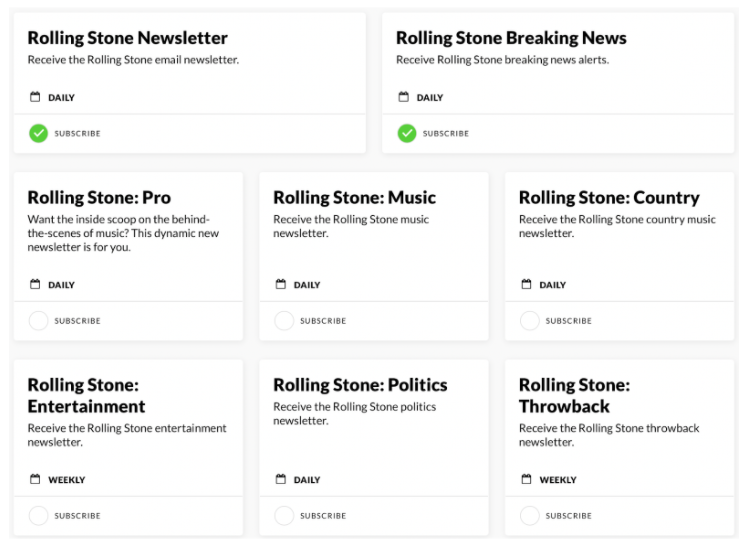

2. Use an algorithm to automate distribution
Automate your email marketing strategy with an algorithm that does the legwork for you. Meaning, it can sift through your data and pinpoint exactly which consumers to reach with which types of dynamic content.
Just look at Farmers’ Almanac. The legacy publisher more than doubled its email and push notification revenue by using Jeeng’s proprietary algorithm to deliver personalized, automated messaging.
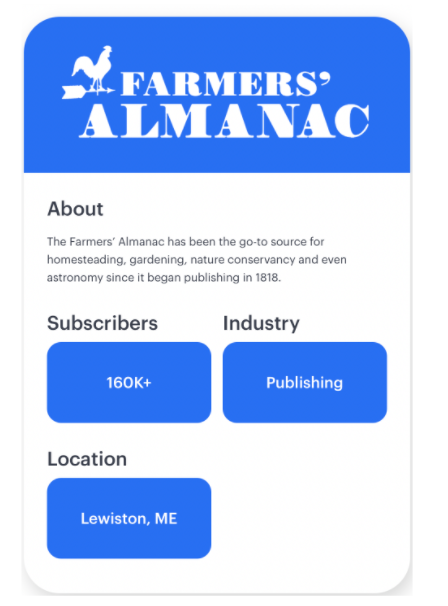
“Because we’re able to send content that caters to a readers’ particular interests, instead of generic batch-and-blast emails, our click-thru rates and traffic on our website have both increased,” said Frank Pagano, digital marketing manager at Farmers’ Almanac. “Plus, we can track what each user engages with, and what they don’t, to continuously refine our content recommendations and timing.”
3. Monetize newsletters with personalized ads
Email personalization techniques aren’t just for organic content. They can also be used to launch paid ads, effectively monetizing email newsletters to help drive revenue and encourage customer engagement.
With the right email marketing platform, you should even be able to deliver different types of ads — like text, native, display, and link ads — depending on your content needs and audience behaviors.
Take this email from Bloomberg, for instance. It includes sponsored content from tech company Darktrace, reaching customers who’ve already signed up to receive tech-related stories.
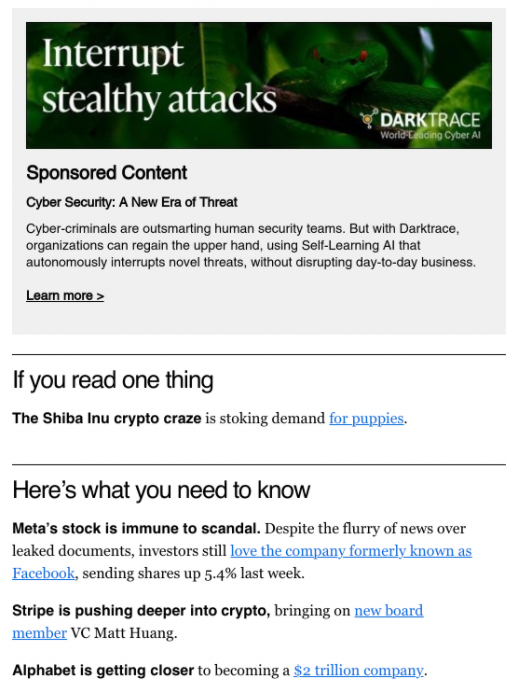
How to combine marketing personalization and automation
Automation is the engine to keep your email marketing personalization running seamlessly and efficiently. Sure, you could execute these best practices manually, but you’d cost yourself a lot of time and money. And, without the power of automation, you’d miss out on key insights and opportunities to optimize your customized email campaigns.
More specifically, here are the many marketing personalization processes you can automate with the right tools:
- Collecting first-party customer data from across channels, including email and websites
- Building target user profiles based on demographics and behavioral segmentation
- Sourcing and delivering real-time, personalized content on the right platforms at the right time
- Recommending optimization strategies to increase engagement and revenue
The platform for personalization
Jeeng is built to help you deliver personalized messaging that clicks — across email, push notifications, websites, and news reader apps. We also combine marketing personalization and automation with ease.
Our algorithm automatically gets to know your subscribers and delivers the content they want to see, so you can increase click-through rates and revenue at scale. From getting started with just one line or code to A/B testing email campaigns for optimization, we’ll be there each step of the way, so you can be as hands-on or hands-off as you wish.
Ready to launch your personalized email marketing campaigns? Reach out to get started.

Originally published on November 10, 2021. Last Updated on March 29, 2022.

